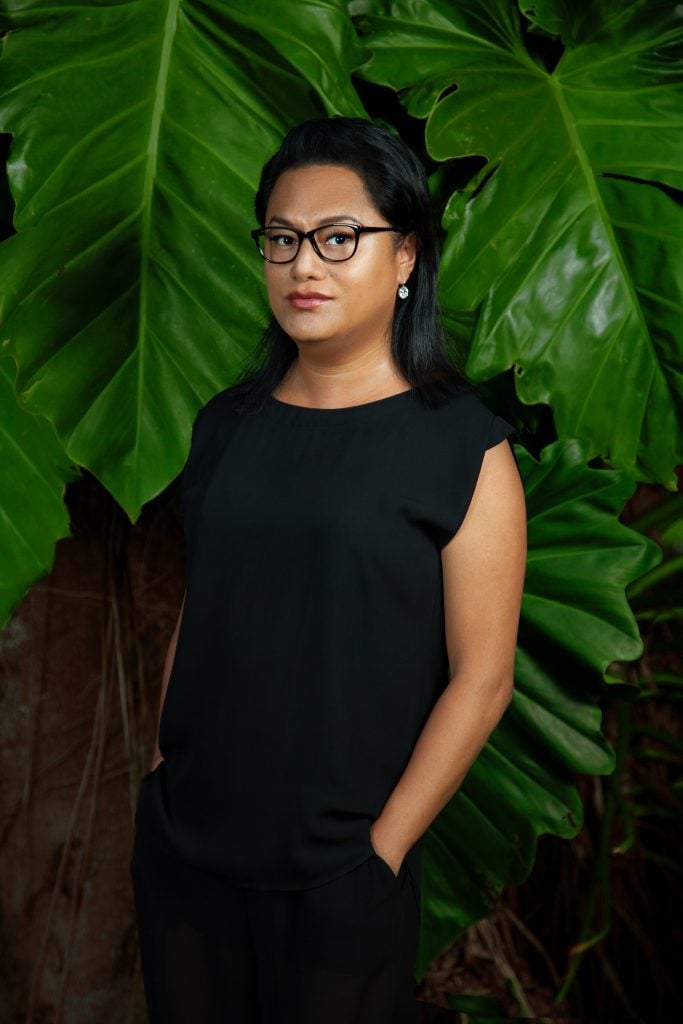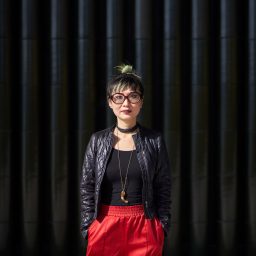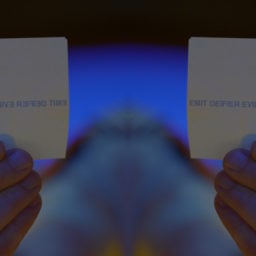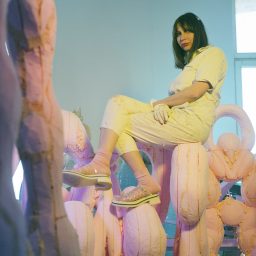In a historic and overdue first, this year, New Zealand’s pavilion will be taken over by a South Pacific islander who identifies as Fa’afafine, which is Sāmoa’s third gender. Sāmoan-Japanese artist Yuki Kihara is renowned for exploring postcolonial history, and for her ambitious project in Venice, she will dive into the singular lens of the Fa’afafine—which means “in the manner of a woman”—with a campy reading of the notion of paradise, bringing Indigenous perspectives to drag culture via the new term In-drag-enous.
In Paradise Camp, a series of photographs, archival documents, and films, which will be presented in Venice next month, Kihara delves into community issues between her native Sāmoa and New Zealand (which occupied it from 1914 until 1962), including marginal histories, politics, and climate change. The work was made with a cast and crew of more than 100 on Upolu Island, Sāmoa.
Artnet News caught up with Kihara as she was in the final stages of preparing for the pavilion of Aotearoa, the Māori-language name for New Zealand. The artist spoke about the landmark moment in history, as well as the challenges of organizing an exhibition of this scale during the pandemic.
Can you send us a snap of the most indispensable item in your studio and tell us why you can’t live without it?
I would say my laptop, because I practically use it for everything! During the global lockdown and when Zoom was the primary means of communication, my room became a mini-film studio where I sorted out lighting, outfits, and held meetings and participated virtually in fundraising galas for Paradise Camp.
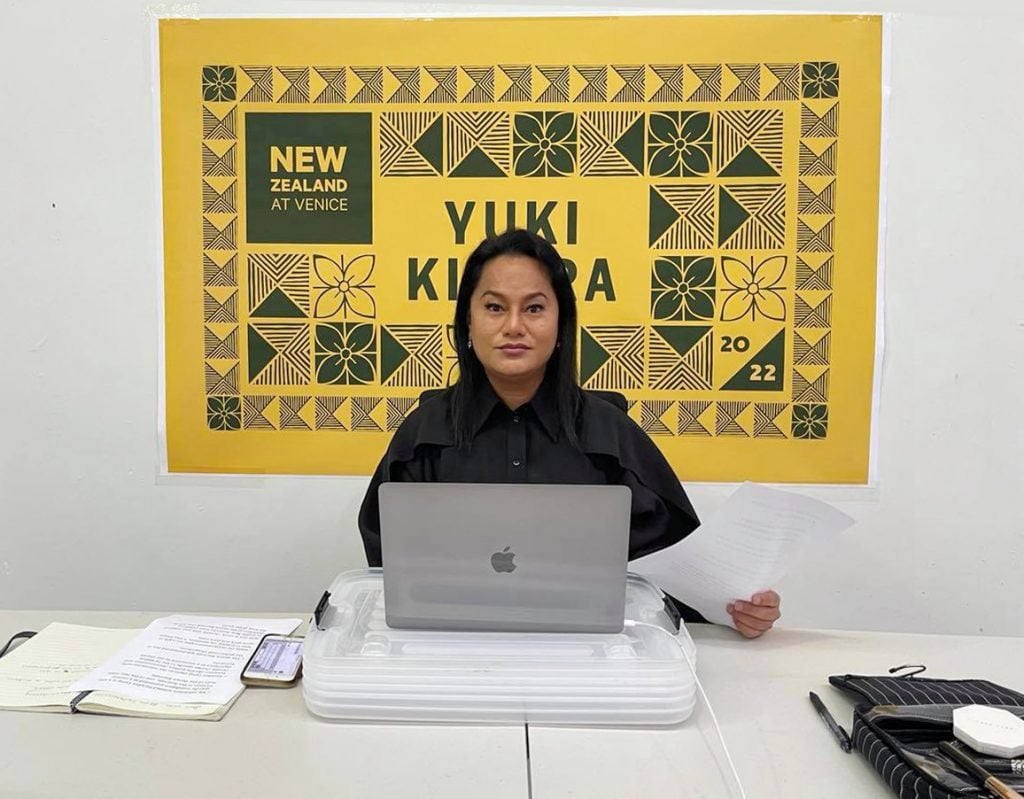
Artist Yuki Kihara prepares to participate in a fundraising gala for Paradise Camp, 2021. Photo courtesy of Gui Taccetti.
When it comes to planning for your country’s pavilion, what is the studio task on your agenda this week that you are most looking forward to?
I have been busy working on my script for the filming of the virtual opening for the New Zealand pavilion, as we are not having an in-person opening reception at the Venice Biennale. Travel for many of us from the Moana Pacific to the Venice Biennale comes with many complications during the global pandemic.
A lot of things I had planned for the opening of Paradise Camp at the Venice Biennale, including a live performance from drag entertainer Cindy of Sāmoa, will now have to be reserved for when Paradise Camp tours Sāmoa in 2023, which is something I’ve been planning to work on post-vernissage. The touring of Paradise Camp to Sāmoa also allows the Fa’afafine community access to my work, as Paradise Camp was primarily made for them.
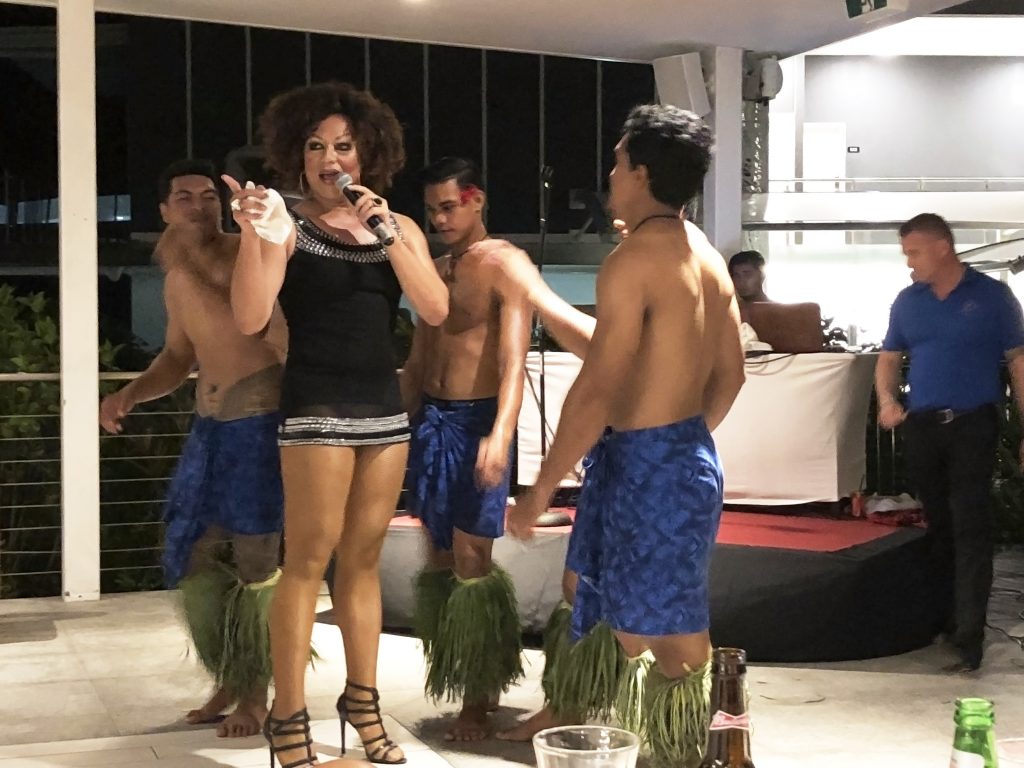
Fa’afafine drag entertainer Cindy of Sāmoa performing in 2019. Photo courtesy of Yuki Kihara.
Can you send us a picture from your last site visit to Venice? What was the main to-do of that trip?
This photograph is a group shot with the staff of La Biennale. Previously, I had been to the Venice in 2009 and 2011, and I remember telling myself that one day I would exhibit my work in the Venice Biennale, but wasn’t sure how that was going to happen.
Fast-forward to September 2019, I was in Venice with my curator Natalie King and Creative New Zealand’s Venice Biennale project manager Jude Chambers, conducting site visits in search of a venue that would present Paradise Camp! It was so surreal. We also met with the Biennale staff to reiterate New Zealand Pavilion’s commitment to Biennale Arte. I gave the Biennale staff handwoven fans from Sāmoa, which stirred their curiosity about what Paradise Camp has in store for everyone!
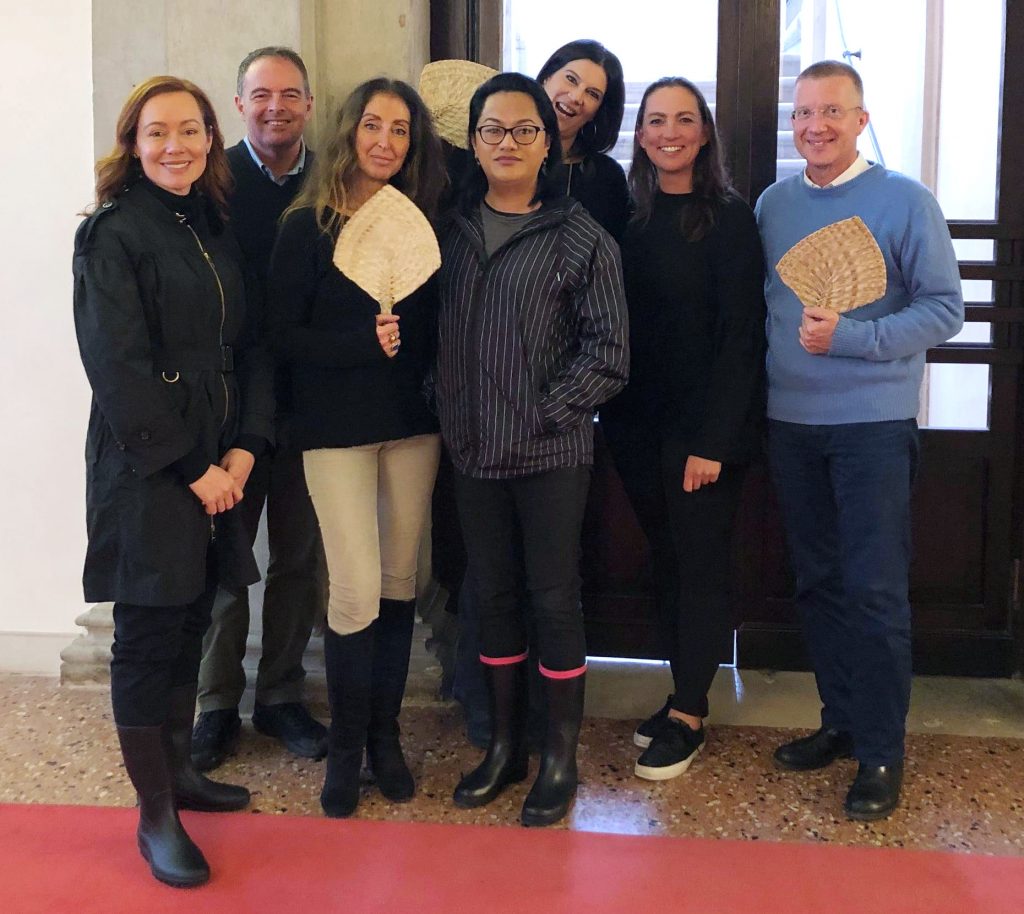
New Zealand Pavilion meeting with La Biennale staff in Venice, 2019. Photo courtesy of Yuki Kihara.
What has been the biggest challenge so far as you prepare for the Venice Biennale?
Organizing and managing a cast and crew of over 100 people in Sāmoa for the Paradise Camp film production across seven days. High-level production of this kind has never been attempted in Sāmoa before. Still, thankfully, the core crew members in the production team already had experience working on film sets, which made it manageable and helped realize my vision for Paradise Camp. We’re also lucky that we could shoot the work before the global lockdown came into place around April 2019, as it would have been impossible to shoot Paradise Camp with all the social distancing measures in place.
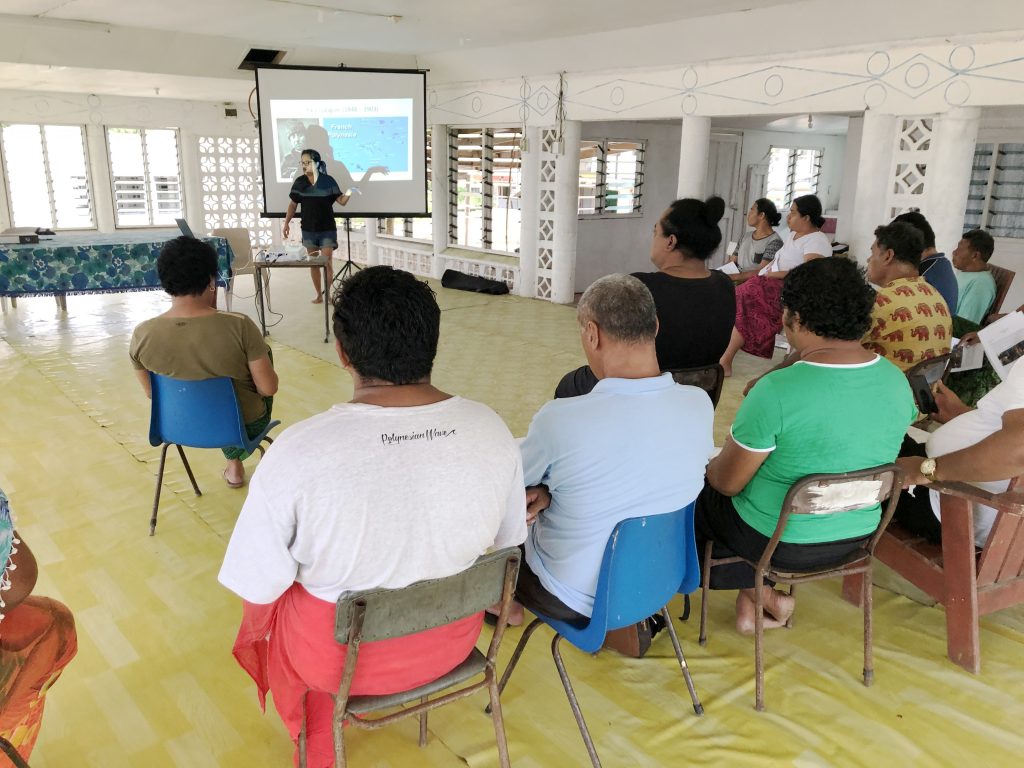
Yuki Kihara leading the consultation with the Fa’afafine community for their participation in Paradise Camp‘s production in Upolu Island, 2020. Photo courtesy of Yuki Kihara.
Is there a picture you can send of your work in progress?
This photograph captures my preparations as a film presenter for Paradise Camp. I remember looking at the mirror while rehearsing my script. I had just come out of surgery and felt exhausted, but once the hair extensions and make-up came together, I felt like a whole other person, which gave me the boost of confidence I needed. No rest for the wicked!

Yuki Kihara in makeup and hair preparation for a film shoot in Auckland, New Zealand.
When you feel stuck while preparing for a show, what do you do to get unstuck?
When I have writer’s block from working on the film script, I try to do something completely different to clear my mind, so I can revisit the script with fresh eyes.
What trait do you most admire in a work of art? What trait do you most despise?
I admire works of art with rigor in their concept and presentation, making the aesthetic experience more engaging. This also extends to everyday life beyond the gallery space. I am not a fan of minimalistic art compensated by hefty over-explanation.
What are you looking at while you work? Share your view from behind the canvas or computer—wherever you spend the most time.
When I’m working on my laptop, I have a picture of my grandmother Lesina and great-grandmother Telefonipālagi Pili on the corner of my screen, which serves as a reminder of my ancestral connection to lands in Sāmoa. Unfortunately, I never had the opportunity to meet these incredible-looking women before, but I often pray and speak to them spiritually. As a presenter for the filming of Paradise Camp, this photograph also inspired the styling of my makeup and hair.
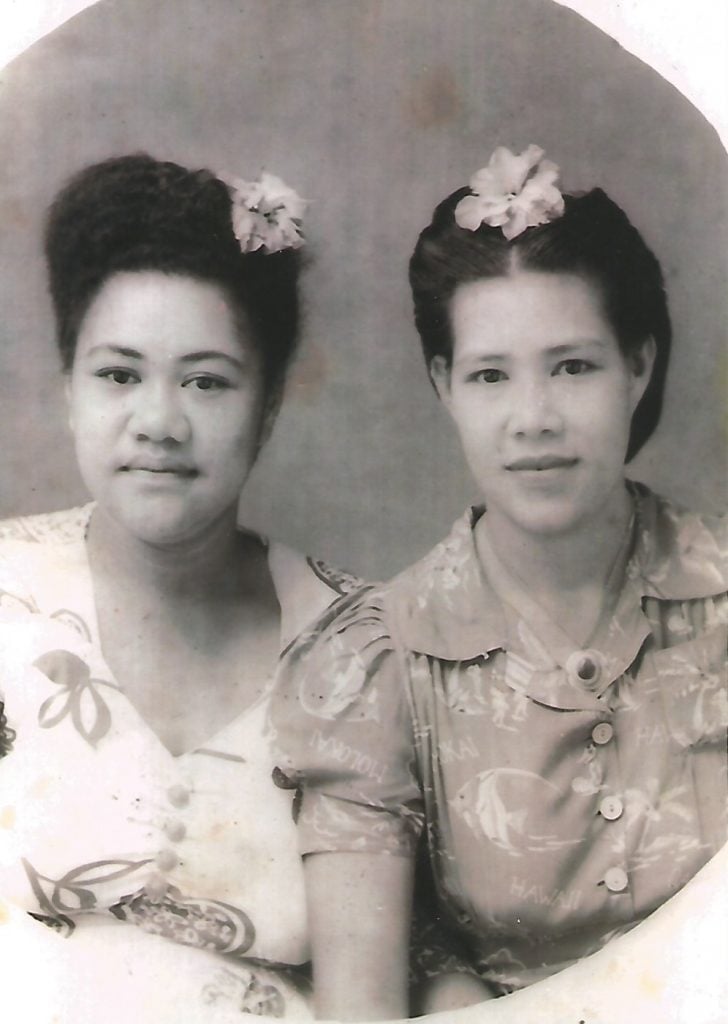
Yuki Kihara’s grandmother Lesina (left) and great-grandmother Telefonipālagi Pili (right). Photo courtesy of Yuki Kihara.
What is one film, piece of writing, or other artwork that inspired you most in preparing for Venice?
Paradise Camp was first inspired by an unpublished essay by Ngahuia Te Awekotuku that was presented at the Paul Gauguin Symposium at the Auckland Art Gallery in 1992, and was further developed after viewing Gauguin paintings at the Metropolitan Museum of Art in New York on the occasion of my 2008 solo exhibition there, “Living Photographs.” It’s unusual that an unpublished essay could inspire a project. Still, for me, Ngahuia’s essay outlined the genealogy of our Indigenous and queer existence in the Moana Pacific after being told all my life that my identity as a Fa’afafine was insignificant.
What’s your favorite hideaway to eat, drink, or to take a break in Venice?
There is no particular place I like to go to, as I love walking around Venice and the feeling of being transported in time. I look forward to visiting Poveglia Island, formerly a quarantine station, from 1776 for almost 100 years. It’s where the idea of quarantine we now have worldwide first began.
